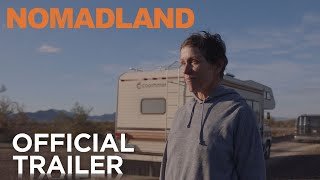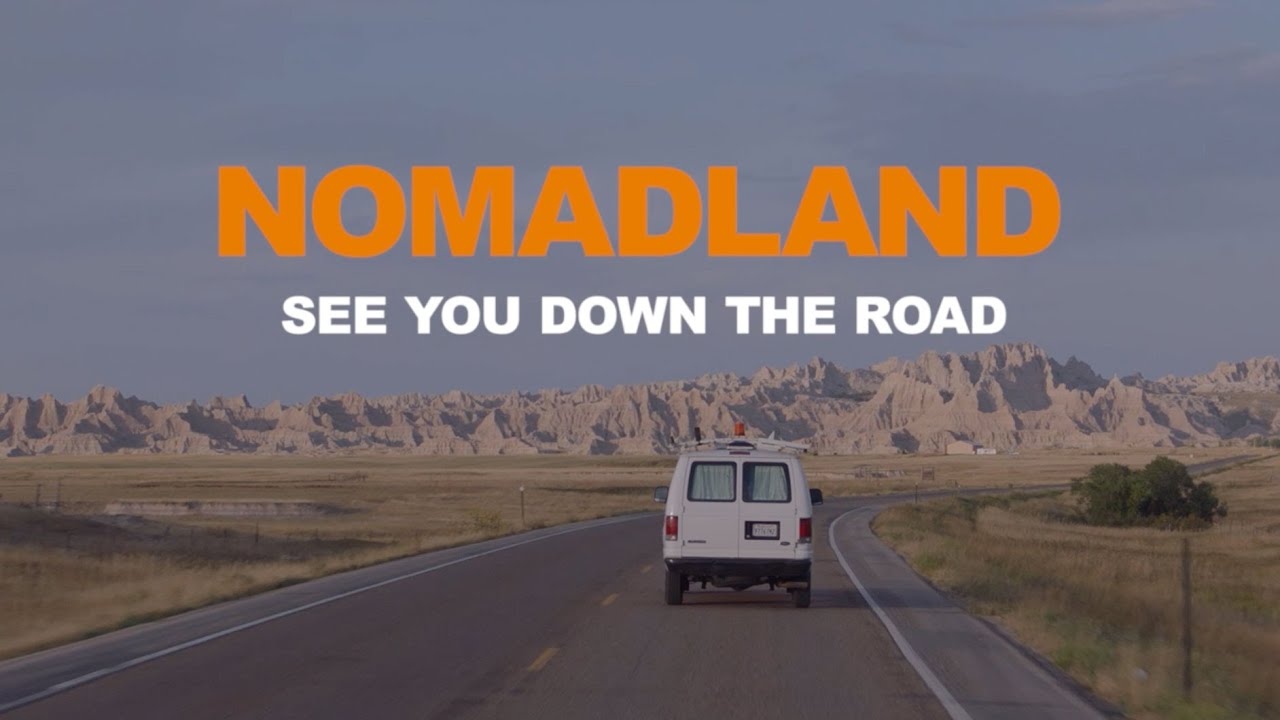🎬 Nomadland (2020) – Deep Dive into Production, Setting, and Making
🖋️ Creator, Source & Writer
- Chloé Zhao adapted the screenplay from Jessica Bruder’s bestselling book Nomadland: Surviving America in the Twenty-First Century, blending nonfiction with dramatic storytelling.
- Zhao wrote, directed, and edited the film, creating a unique hybrid of documentary and fiction.
🎭 Cast: Fiction Meets Reality
- Fern, a grieving widow and van-dwelling nomad, is portrayed by Frances McDormand, whose understated and naturalistic performance anchors the film.
- Real-life nomads like Linda May, Swankie, and community elder Bob Wells play themselves, sharing personal stories that bring authenticity to Fern’s journey.
- David Strathairn appears as Dave, a fellow nomad who offers a gentle romantic connection to Fern.
🌍 Where They Filmed
Nomadland’s breathtaking realism is rooted in real locations across the American West:
- Empire, Nevada: The film opens where Fern’s factory town collapsed after the gypsum plant shut down in 2011.
- Quartzsite, Arizona: Hosting the Rubber Tramp Rendezvous, a central nomad gathering seen in the film.
- South Dakota Badlands and Wall Drug: Fern works there, highlighted by sweeping vistas and community interactions.
- Scottsbluff, Nebraska: Featured during the beet harvest scene, capturing seasonal migrant work.
- California Coast: Fern visits Dave’s coastal home, with visits to Point Arena, Mendocino redwoods, and San Bernardino forest.
- Nevada stops: Fern picks up Amazon seasonal work and camps at Fernley’s Desert Rose RV Park.
CDF:
The core filming took place across five U.S. states—Nevada, Arizona, South Dakota, Nebraska, California—and involved genuine nomads and small towns.
🎥 Cinematography & Production Style
- Joshua James Richards (cinematographer, Chloé Zhao’s partner) favored natural light, intimate frames, and long takes to immerse the viewer in Fern’s world.
- The filming crew was small (around 40 people), allowing them to move quietly and capture authentic daily life of nomads .
- Scenes were partly improvised—music around campfires, personal reflections from nomads, and candid interactions—blurring documentary and scripted storytelling .
🏆 Accolades & Recognition
- Awards: Academy Awards for Best Picture, Actress (McDormand), and Director (Zhao); Golden Lion at Venice; People’s Choice at Toronto ).
- Cinematography: Acclaimed for capturing America’s landscapes with poetic realism.
🌿 Cultural & Social Impact
- The film shines light on America’s modern-day nomads—mostly older individuals affected by the Great Recession—who rely on seasonal jobs, community, and self-reliance.
- It subverts traditional views of homelessness, championing dignity, agency, and minimalist living .
- The visuals celebrate America’s wide-open spaces as places of solace, resilience, and quiet freedom .
Nomadland Detailed Storyline Summary
Opening: The Collapse of Empire
The film opens in Empire, Nevada, a small company town centered around a gypsum plant. The factory shuts down, forcing the entire town to close. Fern, a widow in her sixties, packs up her belongings, sells most of her possessions, and decides to live in her van, which she has converted into a tiny home on wheels.
This van becomes her new house and refuge — her way to cope with the loss of her husband and her old life.
Life on the Road Begins
Fern drives through the vast, empty landscapes of the American West. The camera captures sweeping views of deserts, mountains, and highways, emphasizing the isolation but also the freedom of van life.
Fern lives seasonally. She moves between places where she can find temporary work — jobs like cleaning Amazon warehouses, harvesting beets, or working in campgrounds. The film follows her through these seasonal cycles, showing the uncertainty and resilience of this lifestyle.
The Rubber Tramp Rendezvous
Fern travels to Quartzsite, Arizona, to attend the Rubber Tramp Rendezvous, a gathering of fellow nomads living on the road.
Here she reconnects with a community of older Americans living similarly — in vans, RVs, or tents. These are people who have also been displaced by economic hardship but have chosen freedom on wheels over traditional homes.
She meets Linda May, Swankie, and Bob Wells, real-life nomads who share stories and practical advice. Their interactions bring warmth and humor, showing the strength found in these unconventional communities.
Seasonal Work and New Connections
Fern takes up a job at a beet farm in Nebraska. The work is physically demanding and seasonal, but it allows her to sustain her nomadic lifestyle.
During this time, she also meets Dave, a kind-hearted fellow nomad who lives in a house near the coast. They share quiet moments, hinting at a gentle, late-in-life romance.
Moments of Reflection and Loss
Throughout her travels, Fern visits places connected to her late husband, like the abandoned town of Empire. She visits his grave and remembers their life together with quiet melancholy.
These moments are interspersed with scenes of her solitary life on the road — cooking meals in her van, setting up campfires, driving across vast highways — reflecting her strength and solitude.
Community and Resilience
Fern’s story is balanced by scenes of camaraderie with other nomads. Around campfires, sharing meals, and exchanging stories, they build a sense of family despite being rootless.
The film emphasizes the dignity and agency these people maintain despite economic precarity and societal marginalization.
Ending: Acceptance and Hope
The film closes on Fern driving through a forest, alone but at peace. She listens to a voicemail from Dave, suggesting connection and possibility.
Though her future remains uncertain, Fern embraces her freedom and the open road — finding meaning in a life shaped by choice, loss, and resilience.
Key Themes in the Storyline
-
Freedom versus stability: Fern’s life contrasts the freedom of the open road with the security of a fixed home.
-
Aging and loss: The film tenderly explores how older adults cope with grief, change, and societal invisibility.
-
Community outside tradition: It shows how people can create family and belonging in unconventional ways.
-
Economic hardship and dignity: The story humanizes those affected by economic collapse without pity or judgment.
✅ Summary
Nomadland is far more than a traditional film it’s a cinematic journey and social taste of freedom. By blending real voices, authentic settings, and poetic visuals, it honors a resilient subculture that survives on the margins yet finds community on the open road. Its production was intimate, its locations genuine, and its heart undeniably human.


